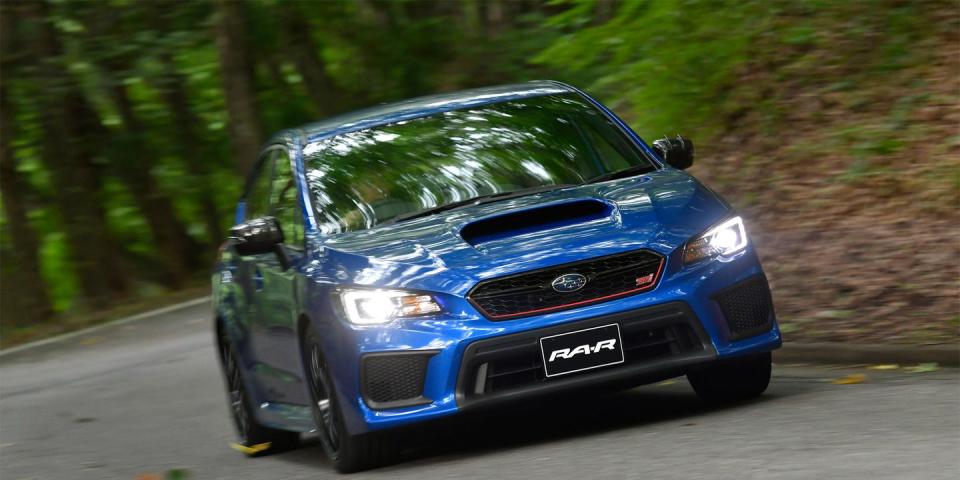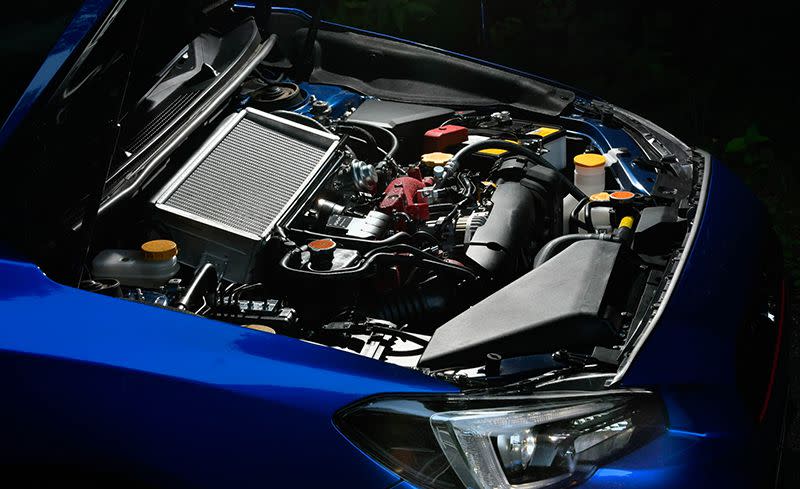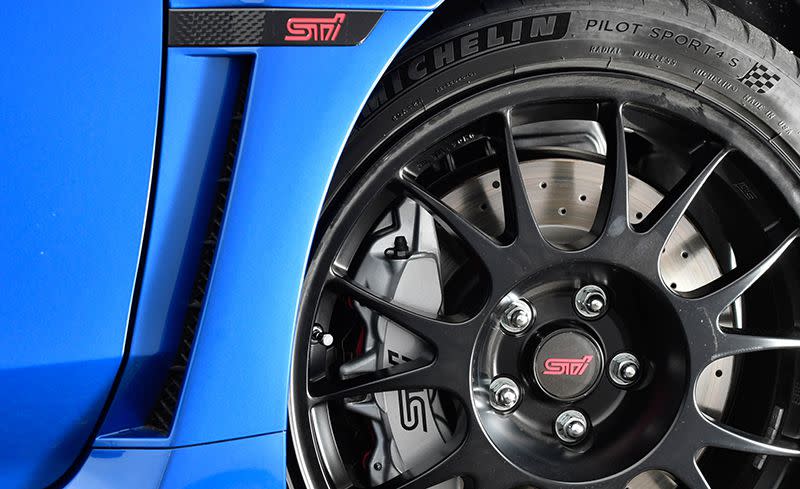The Subaru WRX STI RA-R Is the Ultimate JDM STI

Subaru's STI division is celebrating its 30th birthday, and what better way to commemorate such a milestone than to create the lightest, fastest, best-handling version of the WRX STI ever? That's what Subaru has done with the WRX STI Type RA-R. This STI might have one of the longest, least-inspiring names Subaru has ever used, but on the road, it is unsurpassed. RA-R, by the way, stands for "Record Attempt-Racing," which is what the STI has done and continues to do in the World Rally Championship, Japan's Super GT series, and at the Nürburgring.
Subaru's racing arm, Subaru Technica International (STI), started with the current Japan-market WRX STI, but put it on a weight-saving regimen that sheds some 22 pounds compared to a standard WRX STI, bringing total mass down to a claimed 3263 pounds. At the same time, STI engineers significantly reinforced the bodywork and chassis, fitted bigger brakes, and added aerodynamic elements.
Under the hood, the RA-R uses the turbocharged 2.0-liter flat-four from the limited-edition Japan-market S208. That engine pumps out 324 horsepower at 7200 rpm and 319 lb-ft from 3200 to 4800 rpm. (By comparison, the turbo 2.5-liter used in the United States–market STI is rated at 305 ponies and 290 lb-ft, and the 2.5 in the WRX STI Type RA is good for 310 horsepower.)
This likely will be the last outing for the aging EJ20 engine, and as the swansong, the RA-R's version is among the best that STI has ever tuned. And because the RA-R is the lightest current-gen STI ever, it also has the best power-to-weight ratio.
But it's not only the extra output that makes it special, but also the way the power is delivered. STI's slight revisions to the engine programming, turbocharger, and intake and exhaust plumbing make throttle response snappier and more aggressive, and it more obediently drops revs when the clutch is engaged. Combined, they make for a driving experience that is both more polished and on the edge at the same time.
One attribute that really stands out is the beefier low-end torque-the RA-R's turbo spools up more quickly and makes the car feels faster across the entire power band, without the stock 2.5-liter STI's over-eager turbo-boost surge when punched. The upgrades give the engine more balanced, smoother responses. A new muffler improves exhaust gas flow by a claimed 60 percent and gives the car a throatier exhaust note.
If there's one point of contention, it would be the pedal positioning. The brake pedal is set a little higher than it should be in relation to the accelerator. That makes it difficult to effectively heel-and-toe downshift and tricky to maintain your rhythm when barrelling into corners.
With stiffened dampers and springs, the ride is a little harsher than that of the base WRX STI, but this upgrade was necessary to make the most of the Michelin Pilot Sport 4S tires specially developed for the RA-R. The combination of the Michelin tires and Brembo six-pot monoblock calipers in the front creates exceptional stopping power and superb brake feel.
STI has quickened the car's steering ratio to 11.0:1; it feels just right and turns in with perfect weight and feel. In comparison to the base WRX STI, which is basically tuned to understeer, the RA-R shows almost none of that misbehavior and delivers a neutral feel as the nose tucks in nicely.
We drove the RA-R at Gunma Cycle Sports Center, two and a half hours from Tokyo. The circuit boasts rapidly changing undulation, blind corners, and narrow uphill runs. Over the years, we've driven dozens of cars over this sinuous piece of blacktop, but this STI may be the best ever.
Special exterior elements make this STI stand out from the crowd. Lightweight 18-inch BBS wheels are borrowed from the STI's Super GT racing team. New carbon-fiber mirrors are an eye-catching detail, but they don't shed much weight, and the pop-up headlight washers have been removed for another miniscule mass savings. A huge carbon-fiber rear wing is optional, although the car we drove was unadorned.
The cockpit is basically current WRX STI fare, and while the seats provide sufficient comfort, they could offer a little more lateral support, especially in the corners.
But then again, the RA-R is a rally champion for the road. It needs those comfy seats for long slogs in traffic jams because, in Japan, if you're going to take your limited-edition STI to track days, you will have to endure heavy congestion along the way.
And unfortunately, it's only buyers in Subaru's home market who will get a shot at the RA-R-or, we should say, who had a shot at it. Within eight hours of the car going on sale in July, all 500 units had sold out, priced at approximately $45,100 (4,998,240 yen) based on current exchange rates. Sadly, some of the most desirable Subarus never get chance to leave their homeland.
('You Might Also Like',)

 Yahoo Autos
Yahoo Autos 


